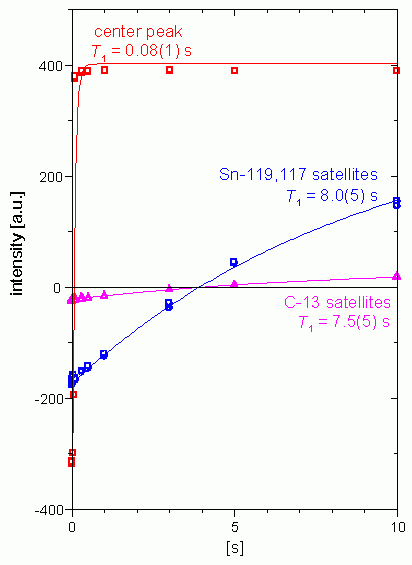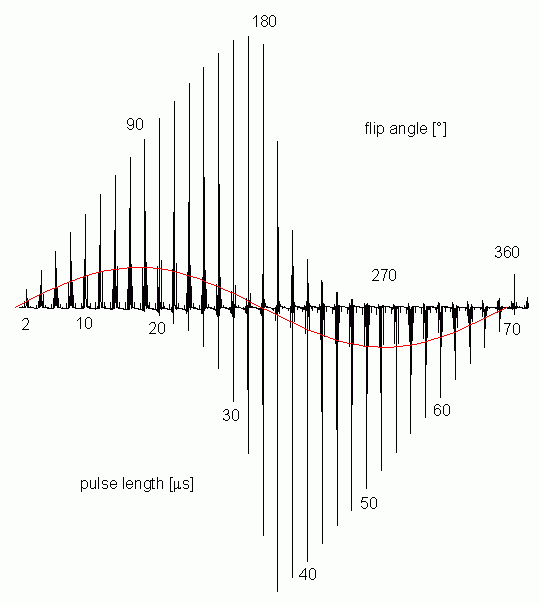[Uni Tübingen] - [Mat.-Nat. Fakultät] - [Fachbereich Chemie] - [Anorg. Chemie] - [Klaus Eichele] - [NMR Ramblings] - Radiation Damping

|
Radiation Damping |
The purpose of this page is to show some illustrative examples of radiation damping rather than giving detailed explantions; to that end, a few links are provided below.
The effects of radiation damping can be observed on samples that produce an intense signal. This
signal is strong enough to induce an electromagnetic force in the rf coil that acts back on the sample.
Due to this feedback, the actual amplitude and phase of the rf pulses are modified.
The potential effects on the spectrum are:
- peak broadening
- peak asymmetry
- phase shifting
This might not always be apparent. For example, see the following 1H spectra obtained for 95% tetramethyltin in C6D6 at 9.4 T (400 MHz 1H frequency):
 |
1H inversion recovery experiment: |
The analysis of the inversion recovery experiment reveals another very unusual observation: |
 |
 pulse length calibration: |
[ Anorg. Chemie ] | [ Go Home ] | webm@ster | last modified: 20.03.2020

